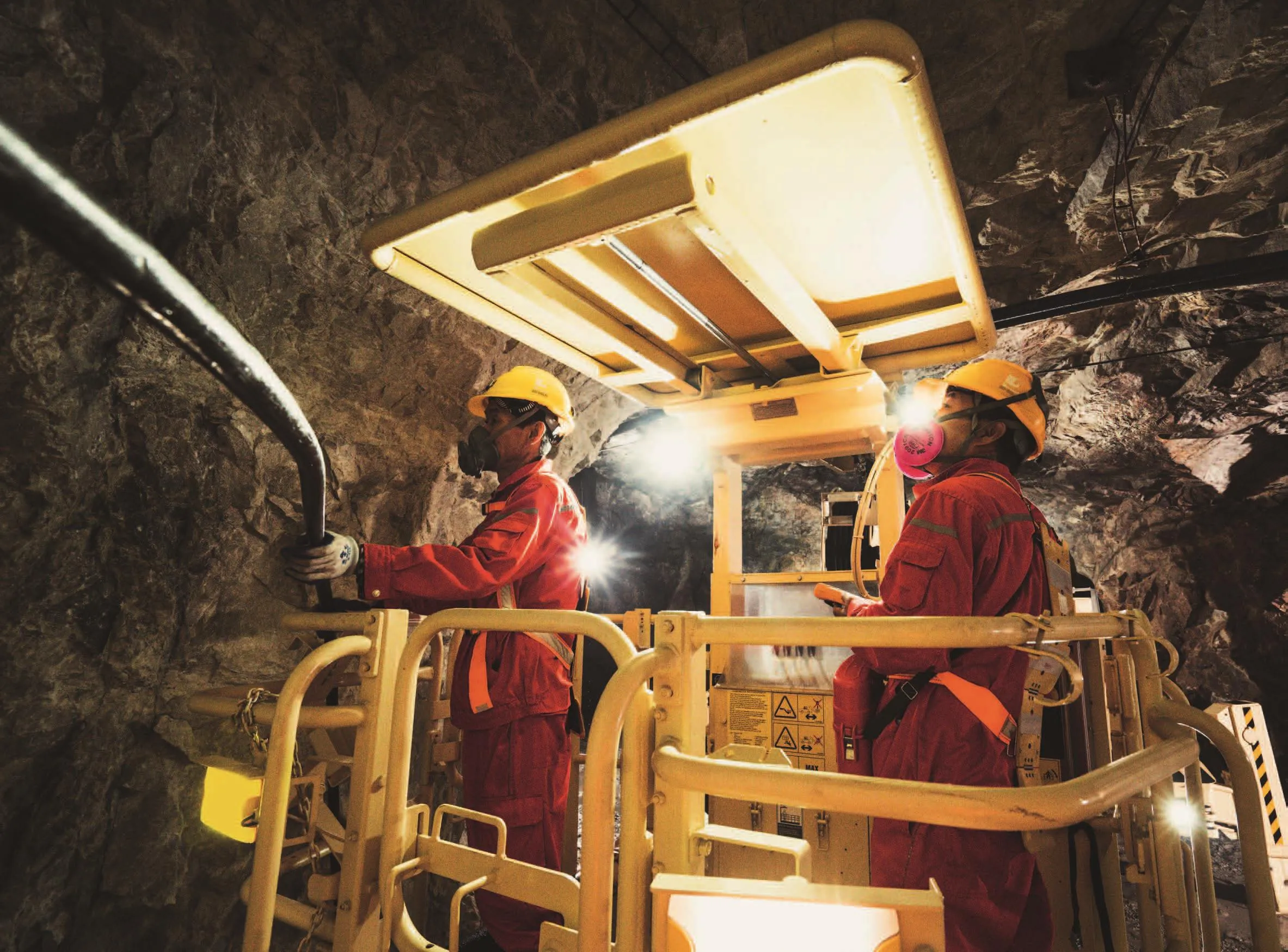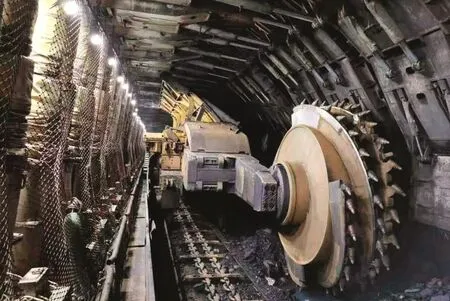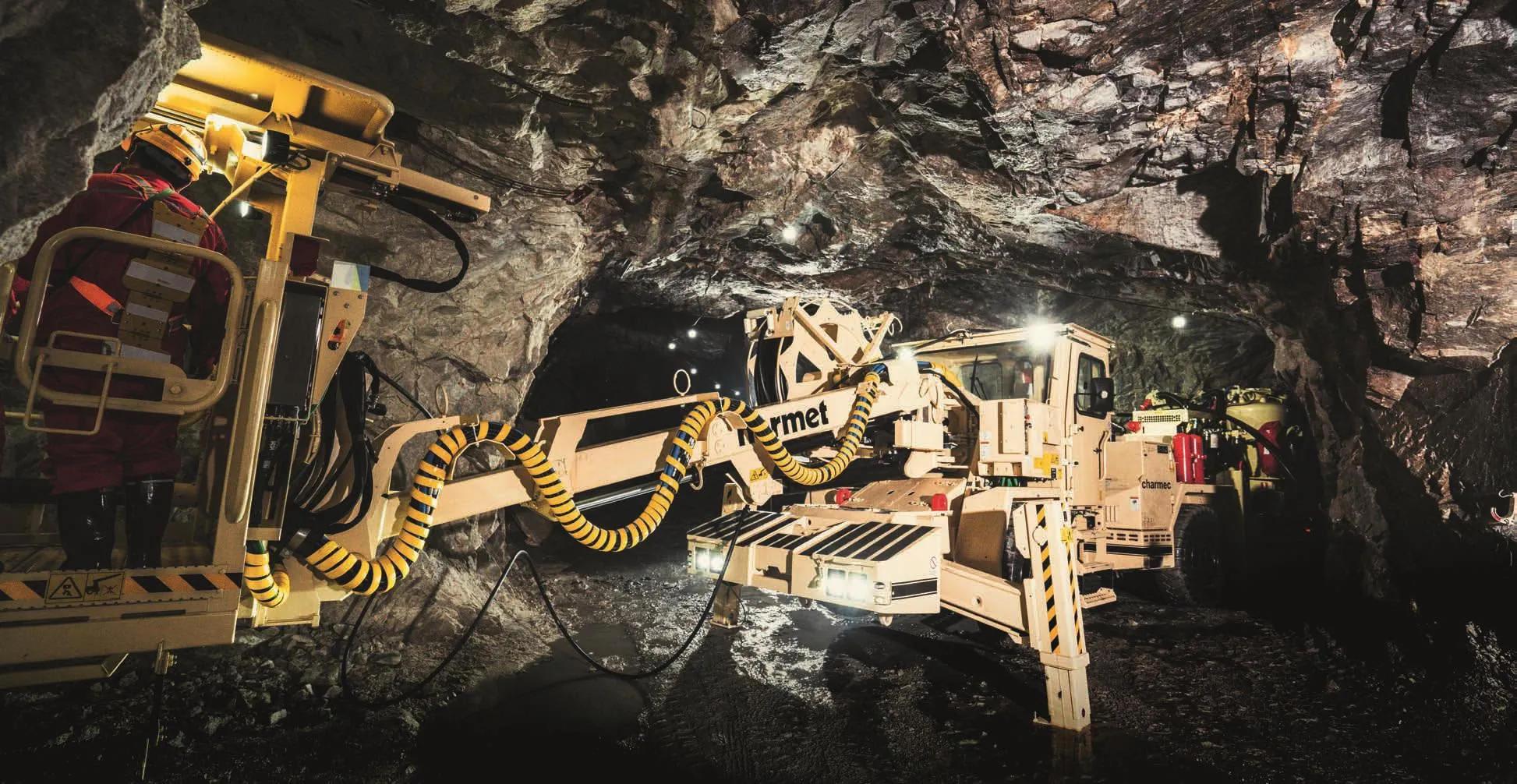THE NEW 49ERS
BY ZHENG YIWEN (郑怡雯)
China tries to improve coal mine safety with 5G“smart” technology
5G智能采矿能否为矿工安全保驾护航?

Day and night, trucks loaded with coal rumble down the dusty road in the desert county of Shenmu, north Shaanxi province, departing from a coal mine studded with gleaming new office blocks.
Wang Xiaopeng, a deputy captain of No.1 Mining Team of the Xiaobaodang Coal Mine, has just finished a night shift 400 meters underground.Wearing a work uniform coated with heavy coal dust,he opens up a remote-control app on his explosion-proof mobile phone and presses a button.In less than five minutes, a carrier vehicle descends and takes him back up to sunlight and fresh air.
Wang, who has been a coal miner for 11 years, is enthusiastic about his new commute.“Miners used to huddle together and wait for the transport,exhausted, and enduring endless waiting times,” he tells TWOC.“These changes are allowing us to leave behind the dark and dangerous conditions underground.”
Meanwhile, in the Sanshan Island Gold Mine of Laizhou, Shandong province, drill rig operator Teng Shuguang no longer has to work underground at all.In 2020, the mine installed a 5G remote-controlled rock drilling system.Teng can now sit in front of several screens in an airconditioned room, using a few joysticks and buttons to operate the drill.
Automation removes the very real dangers of working in mines.On January 10, a shaft in a Shandong gold mine collapsed after an explosion,trapping 22 miners underground.Local officials in Yantai waited nearly 30 hours before notifying the provincial authorities, hampering rescue efforts.It took two weeks before 11 of the miners could be pulled out—the rest lost their lives.
As the world’s leading producer of coal and gold, along with most of its rare earth minerals, China is no stranger to mine disasters.The industry has the reputation of being one of the country’s most hazardous.Mine tunnels are dark, hot, dusty, and cramped, with enormous air pressure underground.Any spark can trigger a gas explosion or fire, collapsing the mine and trapping everyone in it below ground.Miners breathe polluted air and poisonous gases for long hours, and develop longterm health problems like “black lung,”a fatal hardening of lungs caused by coal-dust inhalation.
Conditions are even worse in one of the millions of illegal mines in China.Aging equipment, poor safety precautions, and low pay are routine.Bosses prefer to pay hush money to miners’ families rather than report deaths and accidents to the authorities.The uncertainty of life underground creates superstitions: In some areas,a woman cannot go down a mine shaft, as it’s believed she would bring bad luck through her negative “yin energy.”
On May 9, 1960, a methane explosion in the Laobaidong Coal Mine near Datong, Shanxi province claimed the lives of 684 people in the deadliest mining accident since the founding of the PRC.The deadliest mining accident in the last 15 years was the Sunjiawan Mine Disaster on February 14, 2005, when a gas explosion killed at least 214 coal miners in Liaoning province.
Mine safety in China has improved measurably over the last two decades.According to the National Mine Safety Administration, the number of fatalities in coal mine accidents decreased from 6,995 in 2002 to 333 in 2018.The number of major accidents decreased from 76 in 1999 to just 2 in 2018, while over the same period the death rate per million tons of coal mined decreased from 6 to less than 0.1.
Meanwhile, China has been trying to wean itself off coal as an energy source to lower costs and to meet an ambitious national target of becoming carbon neutral by 2060.In June 2020, a document issued by the National Development and Reform Commission (NDRC) and the National Energy Administration proposed to limit the number of coal mines around the country to 5,000.Ninety-six percent of China’s coal production would come from “large coal bases,”defined as mines whose annual output exceeded 1.2 million tons.
As part of these plans, China is transforming mining with the “Internet of Things,” big data, cloud computing,5G, and artificial intelligence technology.The goal is to create safer,greener, and more efficient “smart mines” that could eventually be fully automated.It would enable miners to stop doing physical labor and become skilled tech operators who “wear suits and ties” to work by 2035, according to another NDRC document from February 2020.
China opened its first “5G intelligent coal mine” in June 2020, in Xinyuan,northern Shanxi province.With a shaft reaching down 534 meters, it is the deepest 5G mine network in China to date.This system allows the massive amounts of monitoring data from inside the mine to to reach the surface in real time.
Neighboring Shaanxi province in China’s northwest—one of the biggest coal producers in the country—has wild ambitions for its smart mining program.From 2017 to today, the Xiaobaodang Coal Mine in Shenmu has evolved from a barren desert to a smart mine, from 100 staff at its launch to nearly 1,400 at present.
According to Deputy Captain Wang,rapid technological innovation has brought earth-shattering changes to his work.Technicians can control extraction through the mine’s 4G network.They can switch on coal cutters deep underground with one click of a mouse from the mine’s operating center.
“The production time has been reduced by one-third, and the number of workers in one team has been reduced from fifteen to six.One less person working underground means reducing the risk of accidents,”Wang tells TWOC.But while staffing requirements have lessened, output has risen: In the past, Wang estimates, it took about 2,000 workers to produce 4 to 5 million tons of coal per year, but Xiaobaodang can produce 21 million tons per year with just 1,354 workers.
Intelligent systems not only improve the efficiency of coal extraction, but can also mitigate the environmental effects of mining.Xiaobaodang has installed an ecological protection system with the aim of helping the mine conserve energy and reduce harmful gas emissions.
Years of resource extraction has caused drastic soil and water loss in the area around the mine, making itone of the worst-hit environments along the Yellow River.Xiaobaodang’s computers apply a range of extraction methods and closely monitor leaks and underground fissures that result.Based on these experiments, experts have formulated standards—the first of their kind in China—about how to mine under different geological conditions,including different thicknesses of earth and rock, to prevent groundwater leaks and soil erosion.

A 5G remote controlled drilling jumbo at the Sanshandao Gold Mine
Wang Shibin, the deputy general manager of the state-owned Shaanxi Coal Group, estimates that by the end of 2022 all mining by the company will incorporate AI technology, with more than 50 percent of coal mines turned into fully automated “smart mines.”
But not all experts are as optimistic.“There is still a big gap before we can achieve intelligent and fullyautomated production,” a chief engineer of a coal mine in Shaanxi,who wished to remain anonymous, tells TWOC.“So far, intelligent mining is more theoretical than actual.The authorities get a lot of attention for stating ambitious goals, but our current technology cannot support these goals.”
According to Liu Feng, vicechairman of the China National Coal Association, out of China’s 5,000 legal coal mines, 200 have installed intelligent mining platforms and automatic equipment.
However, according to the anonymous engineer, “there are around 3 million privately owned coal mines which were not counted in that list.” The main culprits behind mine accidents are “private bosses who only care about high profits and neglect safety and environment protection,” he says.This means industry fragmentation—with many small, independent mining companies operating in the same area—and local government nepotism are the forces now posing challenges to enforcing better standards and smart technology targets.
The cost of installing smart mining technology is another deterrent, especially among smaller coal companies wary of hurting their margins.According to public records, the Shaanxi Coal Group has invested around 15.1 billion RMB to Xiaobaodang’s smart mining projects, and planned in 2018 to invest 500 million RMB to build the Sanshandao Gold Mine into a worldclass demonstration smart-mining site in three years.
There is still a lack of the skilled workers to operate the new technology.“There are fewer and fewer workers willing to work in coal mines because of the tough conditions, so both unskilled and experienced workers are still scarce,” the engineer says.“We need a large amount of technical staff and we need to help traditional workers constantly improve their skills.”
Mines could gradually solve this problem through training programs.Teng’s job as a remote drill-operator required him to learn advanced vocational skills.“I never imagined that, with this technology, I could leave behind heavy manual labor and health risks,” he says—just another miner who’s swapped overalls and coal dust for a suit and tie.

A mining machine working 360 meters underground at the Xiaobaodang Coal Mine

